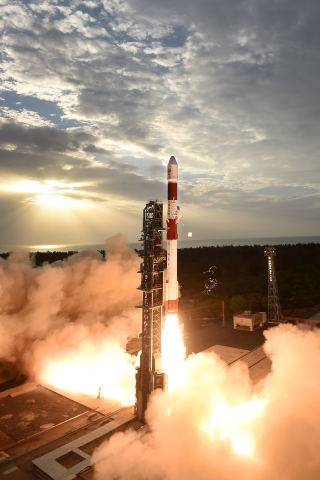The Indian Space Research Organisation (ISRO) successfully launched its PSLV rocket carrying 7 passenger satellites belonging to Singapore from Satish Dhawan Space Centre in Andhra Pradesh’s Sriharikota at 6:30 am today.
The ISRO rocket has placed all seven Singaporean satellites into the near-equatorial orbit (NEO) as planned.
“About 23 minutes after the lift-off, the rocket separated from the satellites and after covering a distance of 535 km, deployed them into their intended orbits,” according to an ISRO statement.
#WATCH | #ISRO launches the #PSLVC56 carrying #Singapore‘s DS-SAR satellite along with six co-passenger satellites launched from the Satish Dhawan Space Centre
Courtesy: ANI pic.twitter.com/jtJC9nPTjS
— WION (@WIONews) July 30, 2023
DS-SAR satellite will be used to support the satellite imagery requirements of various agencies within the government of Singapore
DS-SAR satellite was developed in partnership with the Government of Singapore’s Defence Science and Technology Agency and ST Engineering. It has been launched into a near-equatorial orbit (NEO) at 5 degrees inclination at a 535 km altitude.
It will be used to support the satellite imagery requirements of various agencies within the Government of Singapore. ST Engineering will use it for multi-modal and higher responsiveness imagery and geospatial services for their commercial customers.
#ISRO Chairman S. Somnath, after successful launch of #PSLVC56/Singapore’s DS-SAR satellite, congratulates customers sponsored by Government of #Singapore for having this mission on board PSLV. @MEAIndia @SGinIndia @IndiainSingapor pic.twitter.com/MPvznLXiSy
— All India Radio News (@airnewsalerts) July 30, 2023
The co-passenger satellites s on the mission are VELOX-AM, a 23 kg technology demonstration microsatellite, ARCADE Atmospheric Coupling and Dynamics Explorer (ARCADE) which is an experimental satellite, SCOOB-II, a 3U nanosatellite flying a technology demonstrator payload, NuLIoN by NuSpace, an advanced 3U nanosatellite enabling seamless IoT connectivity in both urban and remote locations.
Galassia-2, a 3U nanosatellite that will be orbiting at low earth orbit and ORB-12 STRIDER which is a satellite developed under an international collaboration.














